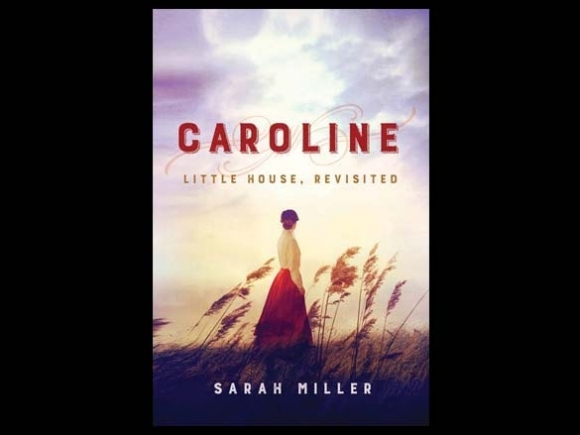Novel whisks one back to the prairie

Sometimes joy and beauty strike like thunderbolts. One minute we are going about our daily routine, minding our own business, and then bam! Tongues of flame leap into our hearts. The eyes of a barista behind the counter of our favorite coffee shop fork a bolt of lightning in our brain. We round an unfamiliar bend in the road, and some incredible vista of a mountain peak blows us away. We visit a gallery, enter a darkened room, and find ourselves so dazzled by a painting that our feet remained glued to the floor for an hour.
Some try to explain this phenomenon by writing books, some by composing songs, some with a canvas and paint, but all such explanations are in the end dross. We are gobsmacked, and that’s the end of it. As the song from the musical “South Pacific” put it, “Who can explain it, who can tell you why? Fools can’t explain it, wise men never try.”
Fools can’t explain it, and wise men never try. Agreed, but alas, I am a reviewer of books, which means that every week I try to explain one thing or another. Judging myself more foolish than wise, I will now embark on a doubtless vain explanation as to how and why such a thunderbolt recently knocked me on my heels, stole my breath and heart, and left me happy just to be alive on planet earth.
That thunderbolt is Sarah Miller’s Caroline: Little House, Revisited (William Morrow, 2017, 367 pages), a novel that whisks us back to the Little House on the Prairie days by dropping us into the body and soul of Caroline Ingalls, mother, wife, and redoubtable pioneer woman.
First, however, a confession: I bumped into Miller’s novel on the shelves of my public library and selected it for review solely from a sense of nostalgia. My wife adored the Little House series, reading them to our children, and though I never explored these stories as a child, I too shared them with our children and enjoyed the pleasure they derived from the adventures of the Ingalls family. The Long Winter, which I read to them when my wife and I were experiencing our own long winter of financial hardship, was especially memorable.
Some of the writing also attracted me. Listen, for example, to the famous opening lines of The Little House on the Prairie:
Related Items
“A long time ago, when all the grandfathers and grandmothers of today were little boys and girls or very small babies, or perhaps not even born, Pa and Ma and Mary and Laura and Baby Carrie left their little house in the Big Woods of Wisconsin. They drove away and left it lonely and empty in the clearing among the big trees, and they never saw that little house again.
“They were going to the Indian country.”
That is beautiful prose, brilliant in its simplicity, structure, and rhythm, and in the tension created by the last two sentences.
Enough about the original stories. Let’s turn to Sarah Miller’s Caroline.
Miller begins her story with the Ingalls family leaving that little house in the Big Woods, but immediately she thrusts us into the mind and heart of Caroline. During the rest of the novel, we see with Caroline’s eyes and feel with her flesh all the challenges exacted by a wagon ride to Kansas and the establishment of a homestead: muddy trails, days of rain, injuries, swollen streams and frozen rivers, building a house, planting a garden, challenges galore for a pregnant woman with two small girls.
Besides her knowledge of the catastrophes that might plague these settlers, Miller is intimately familiar with the daily tasks they faced. Details of homesteading are woven seamlessly into the fabric of this story: making fresh oilcloth from cut squares of linen and boiled linseed oil; building a cabin of notched logs, narrow slabs of wood wedged for shelves between the logs; the cooking of various meats and breads; and a hundred other descriptions of chores and duties necessary to sustain life.
By recounting the struggles of Caroline Ingalls, Miller constantly reminds us of the hard lives of all these “sodbusters.” They work dawn to dusk; they struggle against the elements; they face near disasters on a regular basis. Fortifying them against defeat and pessimism are their religious faith and the neighbors who come to their aid, supplying them with game, bringing the children Christmas gifts, helping with the delivery of Caroline’s baby. Here, Miller reminds us, was born that spirit of America so remarked on by foreigners over the years, this bounty of neighborliness and volunteerism, the same altruism exhibited most recently during the hurricanes in Texas and Louisiana.
A final joy of this novel is the quality of the prose. The writing is clean, descriptive, and lovely in its rhythms. When Miller describes Caroline helping Charles get the wagon across a turbulent creek, we are holding the reins with her. When she is pulling a dying man from the bottom of a well, we work the winch alongside her, feeling the wood and rope tear into our hands, but determined to save lives.
With this blend of deep research and fine writing, Sarah Miller does what so many novelists dream of: she brings Caroline Ingalls alive on the page. When readers leave this story, many will feel, as I did, as if they have gained a friend as well as coming to know a woman worthy of admiration.
If you know a Little House fan, and if you’re looking for a great holiday gift, look no farther. Just purchase and wrap a copy of Caroline: Little House, Revisited, and you’re all set.









